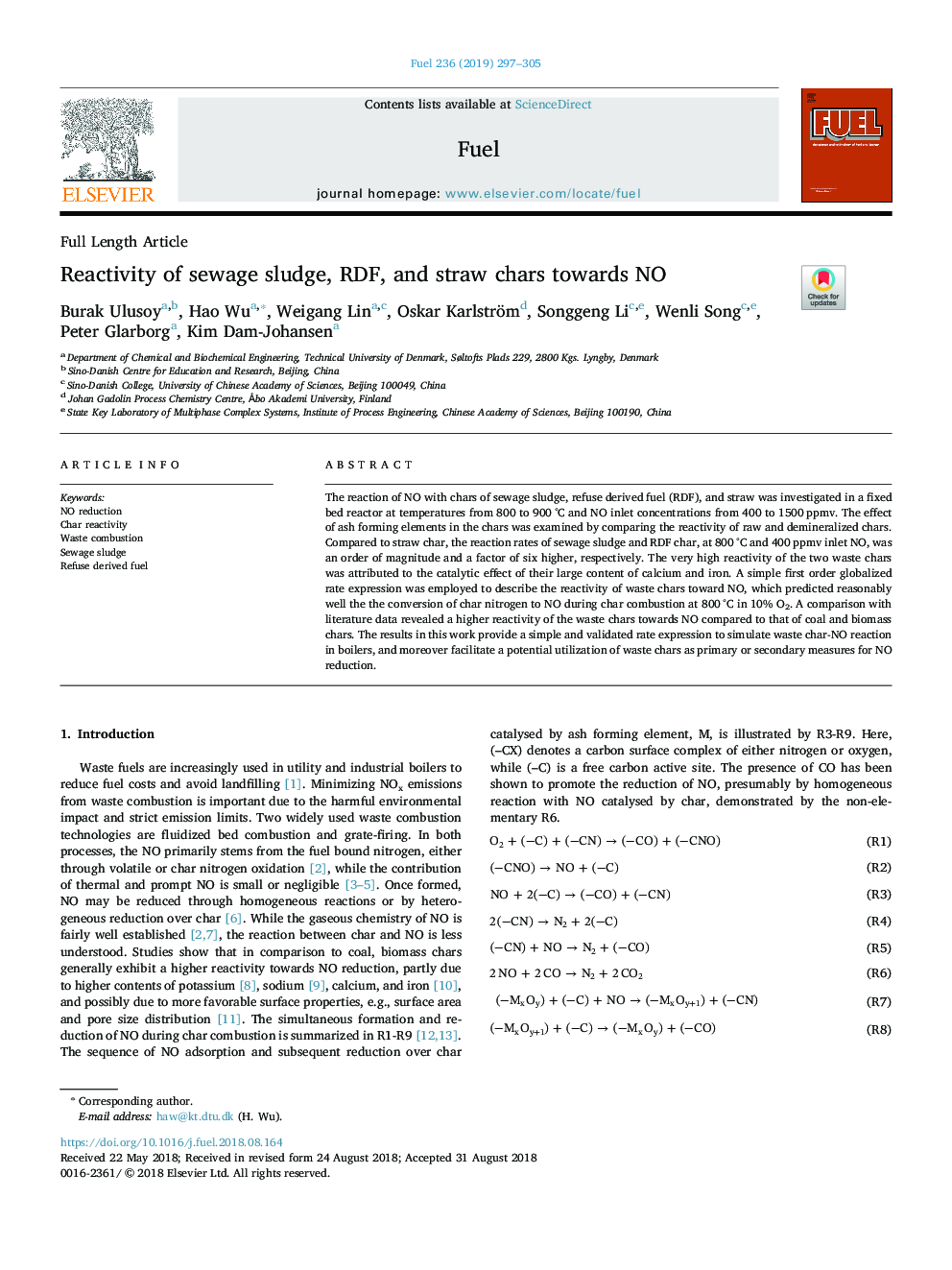| Article ID | Journal | Published Year | Pages | File Type |
|---|---|---|---|---|
| 10145407 | Fuel | 2019 | 9 Pages |
Abstract
The reaction of NO with chars of sewage sludge, refuse derived fuel (RDF), and straw was investigated in a fixed bed reactor at temperatures from 800 to 900â¯Â°C and NO inlet concentrations from 400 to 1500â¯ppmv. The effect of ash forming elements in the chars was examined by comparing the reactivity of raw and demineralized chars. Compared to straw char, the reaction rates of sewage sludge and RDF char, at 800â¯Â°C and 400â¯ppmv inlet NO, was an order of magnitude and a factor of six higher, respectively. The very high reactivity of the two waste chars was attributed to the catalytic effect of their large content of calcium and iron. A simple first order globalized rate expression was employed to describe the reactivity of waste chars toward NO, which predicted reasonably well the the conversion of char nitrogen to NO during char combustion at 800â¯Â°C in 10% O2. A comparison with literature data revealed a higher reactivity of the waste chars towards NO compared to that of coal and biomass chars. The results in this work provide a simple and validated rate expression to simulate waste char-NO reaction in boilers, and moreover facilitate a potential utilization of waste chars as primary or secondary measures for NO reduction.
Related Topics
Physical Sciences and Engineering
Chemical Engineering
Chemical Engineering (General)
Authors
Burak Ulusoy, Hao Wu, Weigang Lin, Oskar Karlström, Songgeng Li, Wenli Song, Peter Glarborg, Kim Dam-Johansen,
